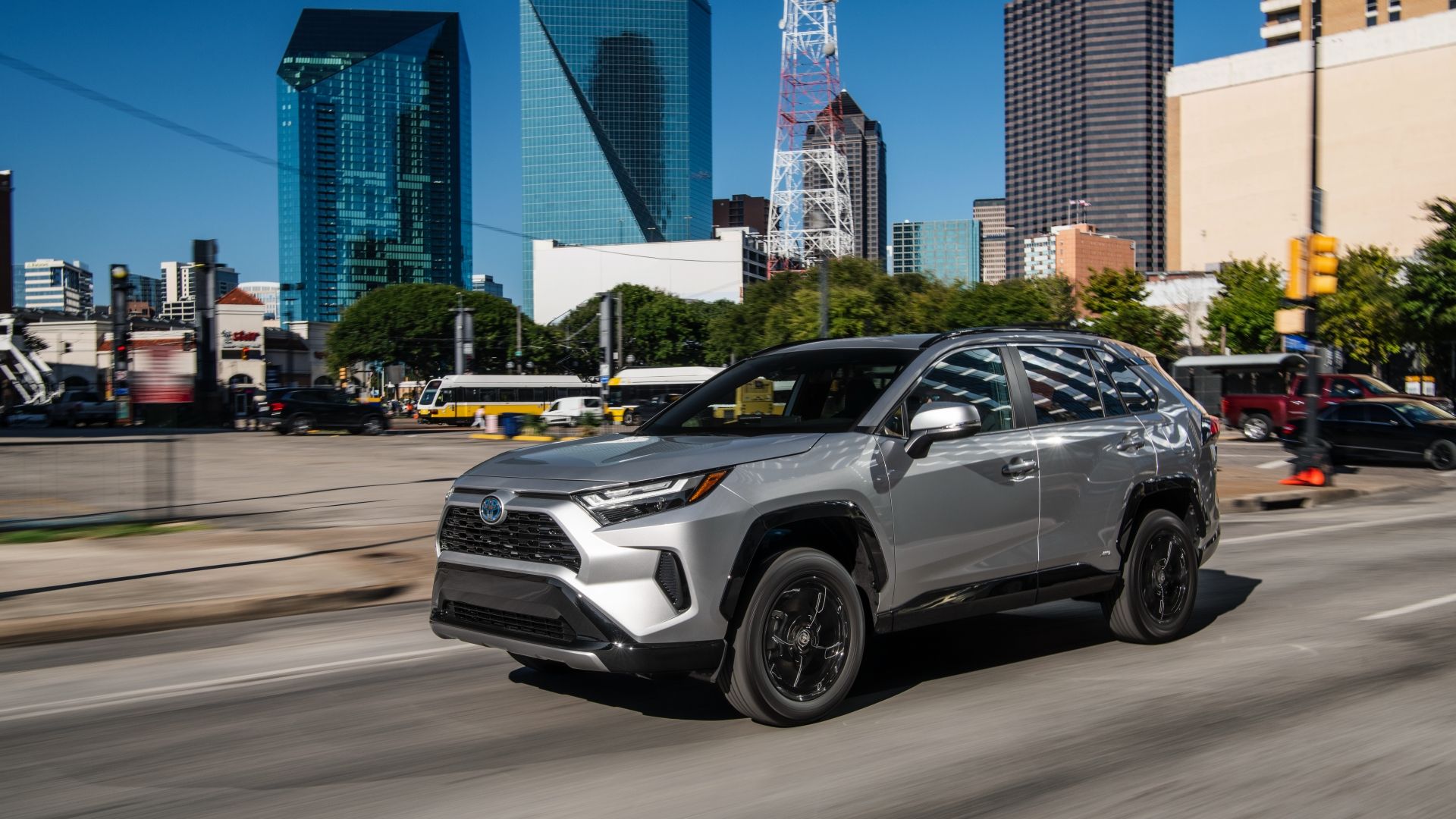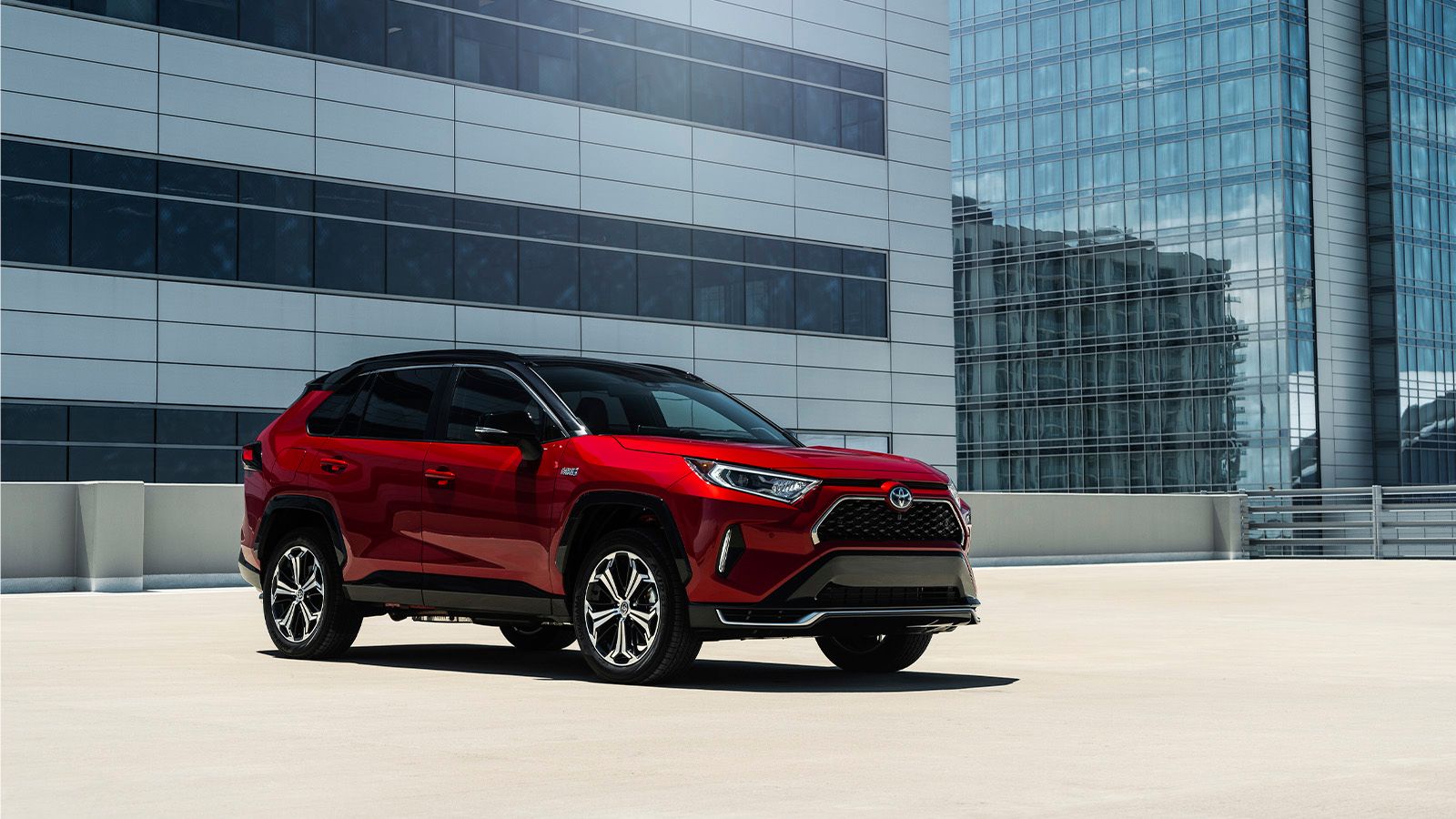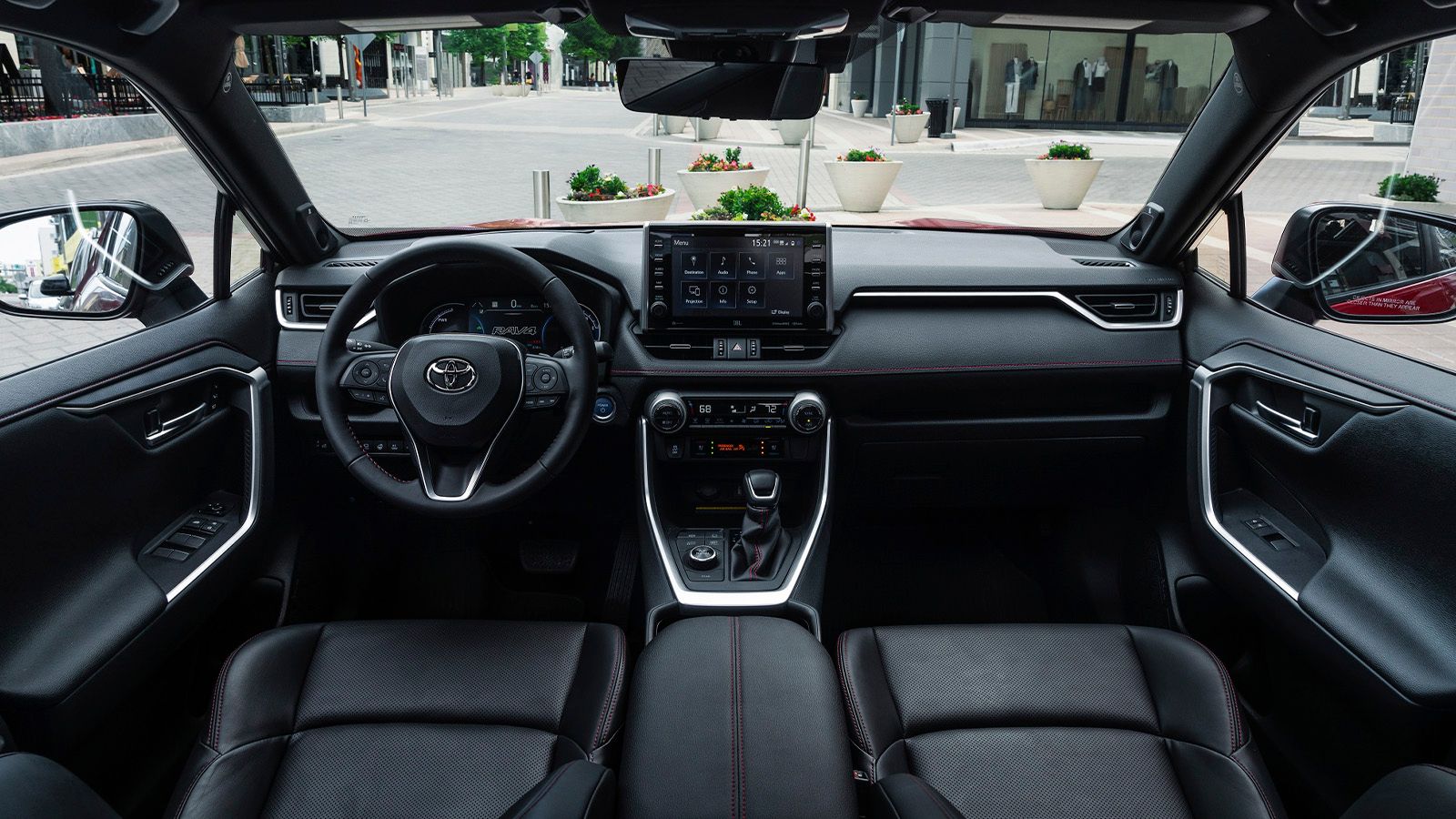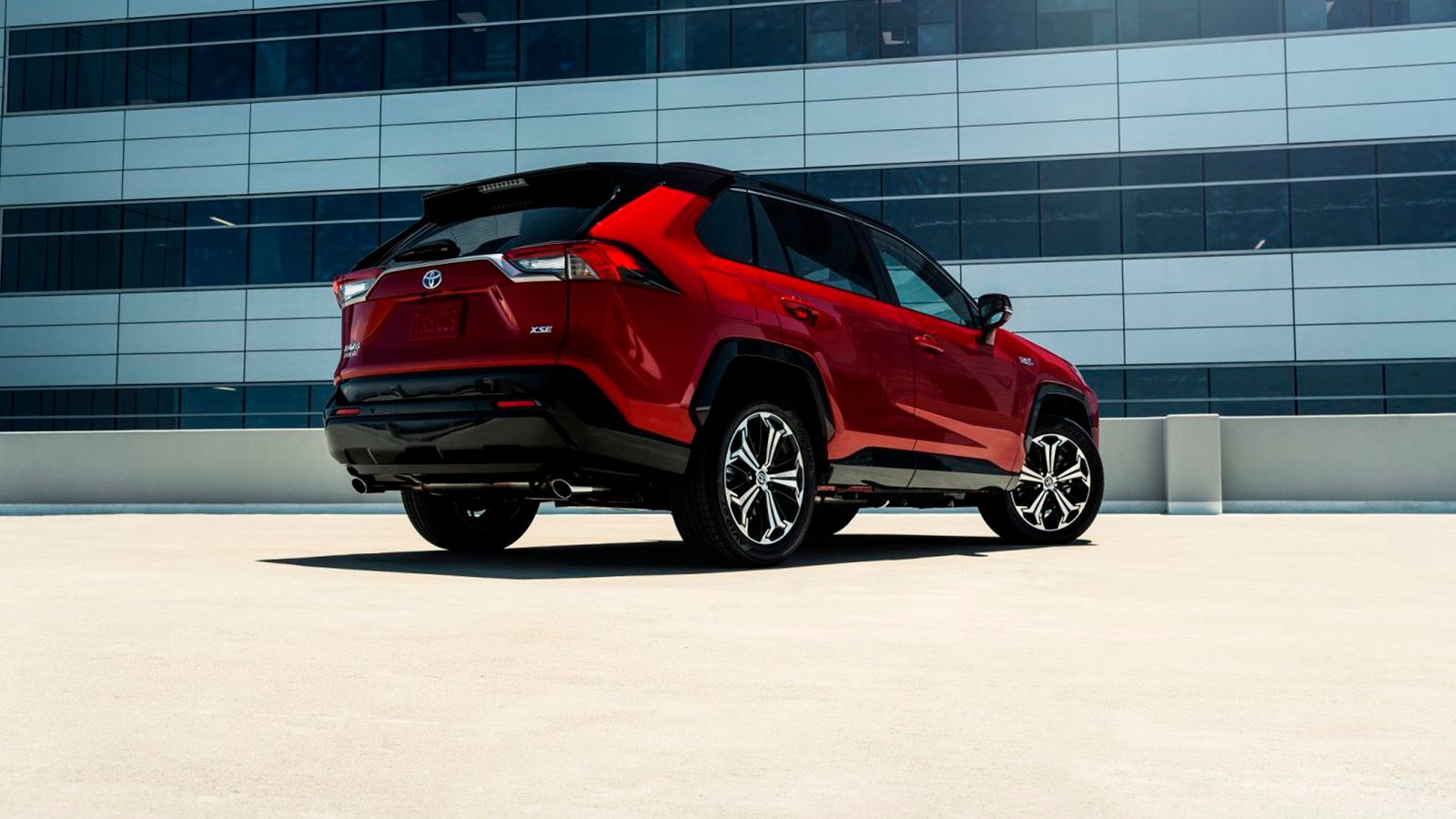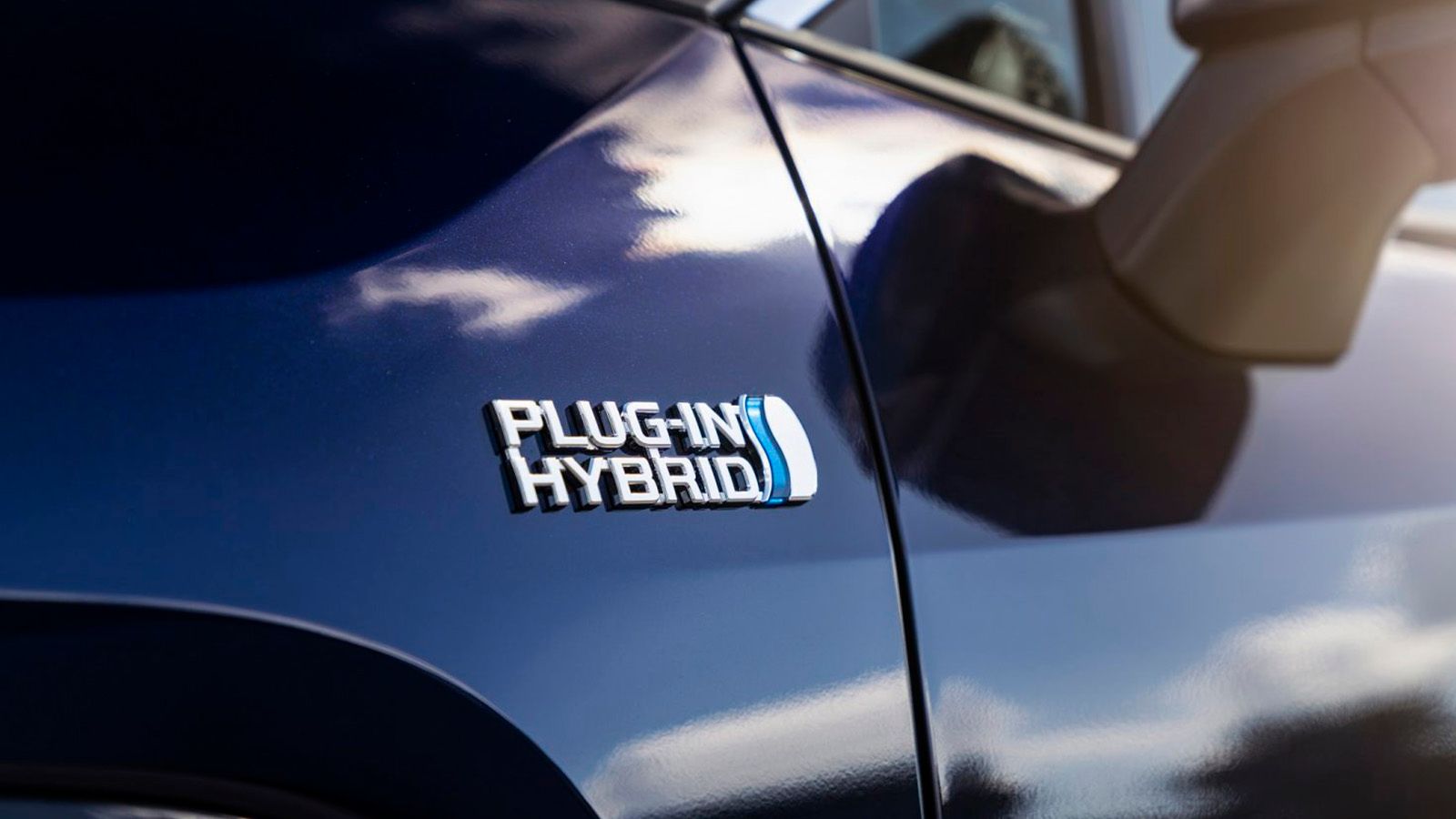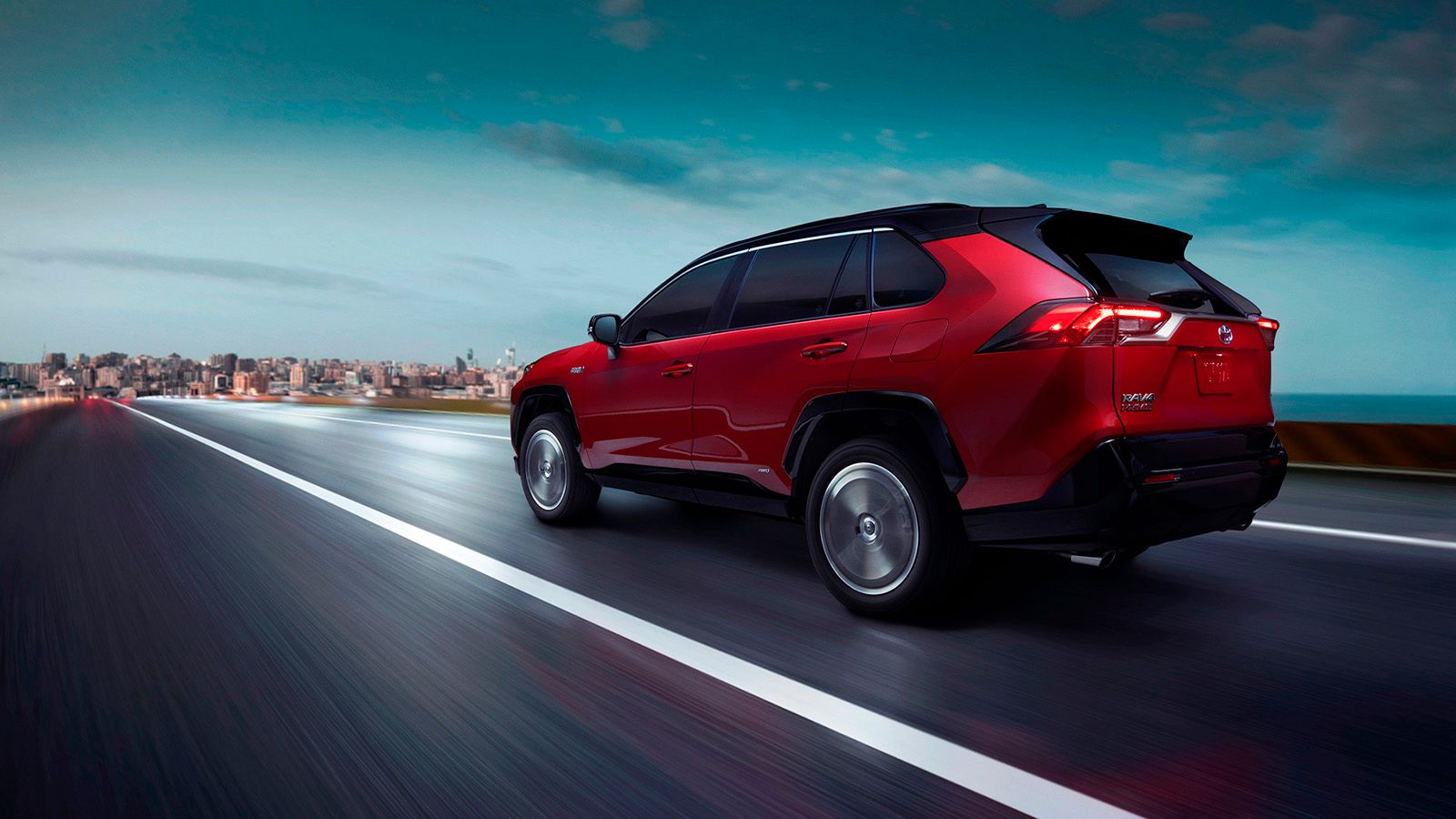The 2023 Toyota RAV4 Prime PHEV delivers exceptional fuel efficiency to the compact-SUV sector, and its electrified powertrain also has additional advantages, including improved performance. The Prime variant is faster than the non-hybrid RAV4 and even has a higher top speed than the 2.0-liter four-cylinder GR Supra, making it a must-have PHEV. Unfortunately, the RAV4 Hybrid's handling isn't as sharp as in a sports car; it's the opposite, with modest road manners that will not appeal to drivers looking for more athletic driving in their daily vehicles. But no one in the market for a family hauler would expect sports car performance in a compact SUV, so no complaints there.
Instead, the Prime's charisma and what sets this model apart from any other plug-in hybrid SUV come from its versatility as a daily family vehicle that offers unmatched fuel efficiency. Still, it's also ready for that weekend off-road adventure thanks to its ground clearance and ability to handle light off-roading with family thanks to its standard AWD system.
The RAV4 Prime Is One Of The Fastest Toyotas Ever Made
The top-of-the-line 2023 Toyota RAV4 Prime is a potent plug-in hybrid with peppy acceleration and a sizable electric range. For the 2019 model year, Toyota unveiled the compact crossover's fifth generation; the Prime variant was added for the 2021 model and is still part of Toyota's 2023 hybrid lineup. The Ford Escape, Hyundai Tucson, and Kia Sportage plug-in hybrid models compete directly with the Toyota RAV4 Prime, but none can come close to the RAV4 Prime. For starters, the Prime is the most powerful RAV4 yet, with an impressive 302 combined net horsepower and a torque of 288 pound-feet, combined. In addition, it can go from 0 to 60 in 5.7 seconds, which makes it a quick SUV by any standards. Its DOHC 16-valve Atkinson-cycle 2.5 Dynamic Force inline-four and an electric motor produce all this performance. Only one car in the Japanese automaker's lineup is quicker than the RAV4 Prime; the Supra. The latter can go from 0 to 60 miles per hour in about 3.7 seconds, making it the fastest Toyota vehicle.
Superb Fuel Efficiency Is One Of The Main Highlights Of The RAV4 Prime
The Toyota RAV4 Prime is a versatile, robust SUV with a comfortable ride. Although the interior isn't particularly extravagant, it's cozy, roomy, and with good-quality materials. But, the RAV4 Prime's powerful and fuel-efficient engine is one of its most outstanding features. Toyota leveraged decades of hybrid vehicle expertise to let us see a fascinating evolution unfold with the RAV4 Prime. This PHEV can go short distances solely on electricity while providing excellent acceleration in hybrid mode, allowing you to enjoy the advantages of an EV in your daily life without experiencing any range uncertainty if you need to take the vehicle on longer trips.
In combined city/highway driving, the EPA estimates that the 2023 RAV4 Prime will achieve 94 MPG equivalent in hybrid mode and 38 MPG in gas mode. These fuel efficiency estimations are excellent for a hybrid SUV and good for plug-in hybrid vehicles. In addition, the EPA estimates that the RAV4 Prime has a maximum total range of around 600 miles and an all-electric driving range of 42 miles. A 6.6-kW charger is an option in addition to the normal 3.3 kW charger. Using a 120-volt domestic power outlet (Level 1), it takes around 12 hours to charge this Toyota's 18.1 kWh battery pack. On the other hand, between 2.5 and 4.5 hours are needed to fully charge a device using a 240-volt outlet (Level 2).
The RAV4 Isn't A Proper Off-Roader But Is Capable Enough For Occasional Trails With The Family
There are two things that Toyota often brings up from time to time. The first is its commitment to hybrid cars, a terrain they have explored with the Prius, a car that even to this day is still immensely underrated. Another is his commitment to 4×4, with extreme options (in the case of the Land Cruiser or the Hilux) and others with a more asphalt approach that allows for the occasional adventure, like the RAV4. The history of the Toyota RAV4 comes from the union of SUVs with all-wheel drive. Hence, its name is Recreational Active Vehicle with 4 Wheel-Drive: RAV4. Over time, the front-wheel drive variants would arrive, undoubtedly more appropriate for daily driving, with the vast majority of time on asphalt.
Toyota offers four AWD systems across its lineup, each tailored to the segment's demands. For example, the RAV4 Prime is a plug-in hybrid electric vehicle with the brand's Electronic On-Demand AWD. Since there is no mechanical link between the front and rear wheels, this technology eliminated the driveshafts and substituted them with electric motor generators for the rear tires. When traction isn't necessary, the back wheel motors shut off and turn on. The RAV4 Prime has a respectable off-road performance right out of the box thanks to Toyota's Electronic On-Demand AWD system, but don't think you can compete with more capable Toyota off-roaders like the Tacoma with its "part-time" 4WD system or the Land Cruiser and 4Runner Limited variants that offer full-time four-wheel drive for the ultimate in utility, refinement, and capability if you're looking to get off the beaten path.
The RAV4's AWD system implies greater weight but not as much as traditional all-wheel drive cars. It doesn't take up space in the trunk, either. And, beyond whether you drive on back roads, it provides added safety in the wet and on curves. It also gives you an extra push when you need it most, such as when joining the highway.

